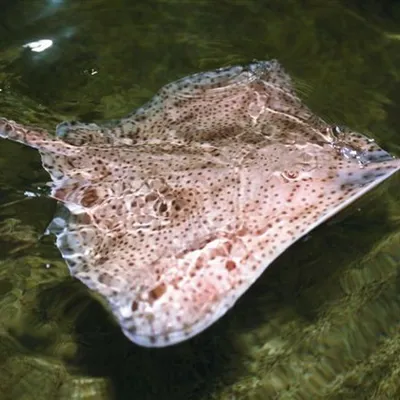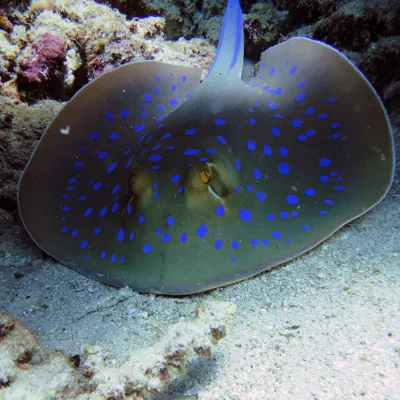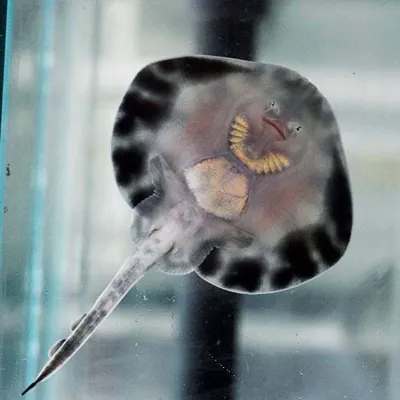- SEA LIFE, Bay of Rays
There are over 500 different species of Rays and Skate in our oceans and rivers
Their closest relative is the Shark; Rays evolved from Sharks around 150 million years ago! Just like Sharks, Rays don’t have a bony skeleton. Instead, their skeleton is made of cartilage (just like our nose and ears!) This makes them lighter so it is easier for Rays to glide through the ocean.
Stingray
Stingrays get their name from the stinging barb at the base of their tail. When they feel threatened Stingrays can whip up their tail to puncture their pursuer with their spiny, venomous barb. Once they have done this it takes a while for a new one to grow back, so they only use it as a last resort.


Thornback Rays
In the 'Bay of Rays' zone, you will find an assortment of amazing creatures that are native to the UK including Thornback Rays and Bull Huss Sharks!
Thornbacks are the most commonly encountered ray around the British Isles, it's easy to see where the thornback ray got its name from - just check out the spines on its back!

Blue Spotted Stingray
- Blue-spotted ribbon tail rays are named for the striking blue spots covering their body.
- They frequent the coral reefs and sandy flats in the Indo-Pacific Ocean.

Babies
When they are born, baby rays are so small and see-through that their gills and stomach are visible through their skin!